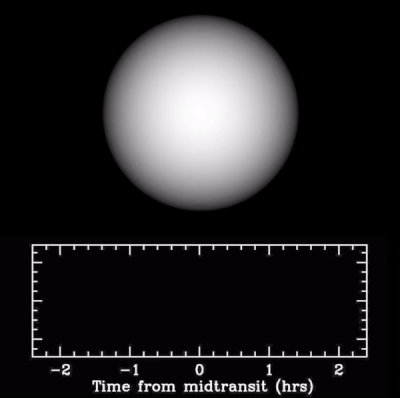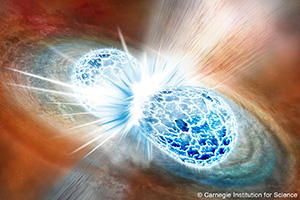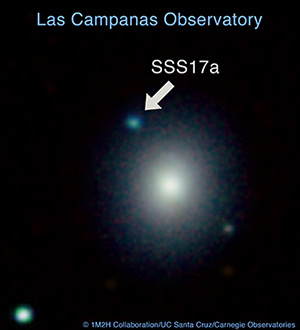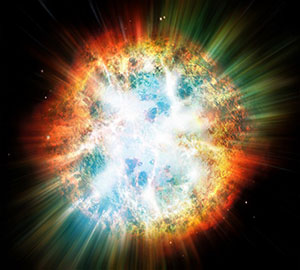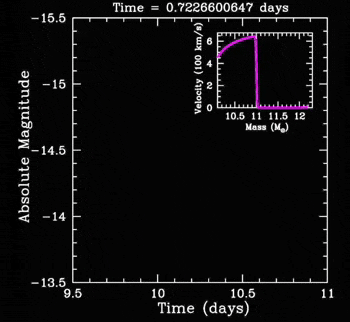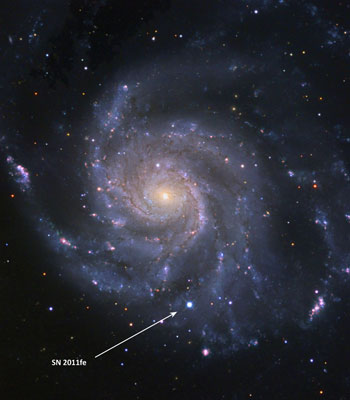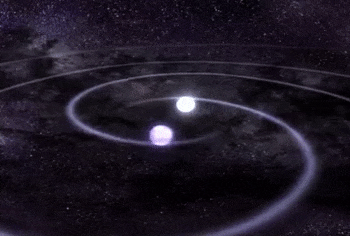
|
Anthony L. Piro
(626) 304-0297
Carnegie Observatories
piro[at]carnegiescience.edu |
|
Background
I am a Staff Member at the Carnegie Observatories and Adjunct Associate Professor of Physics and Astronomy at USC. My research is focused on theoretical astrophysics with a broad interest in topics involving compact objects, astrophysical explosions, accretion flows, and stellar dynamics. I draw on my expertise in nuclear physics, thermodynamics, condensed matter physics, General Relativity, and hydrodynamics both to predict new observational phenomena as well as to understand the key underlying physical mechanisms responsible for current observations. I take a more classical approach to solving these problems — using a combination of analytic and simple numerical models to build physical intuition for complex phenomena. You can hear more about my interests in this public talk on supernovae. |
|
Super-puffs are planets notable for having exceptionally large radii for their masses. This would give them seemingly incredibly low densities. For perspective, Saturn's density of 0.7 grams per cubic centimeter is low enough that the planet would float in water. These super-puffs have densities up to ten times smaller! These adorably named bodies have been confounding scientists since they were first discovered, because they are unlike any planets in our Solar System and challenge our ideas of what distant planets can be like. In recent work, we hypothesized that these planets are actually not puffy at all and instead appear large because they are surrounded by rings. Exploring this idea, we found that this explanation may work for some but not all of the super-puffs. This is because ring material can only extend so far before combining to form moons, and in other cases the planets are so close to their host star to the star's gravity will impact the rings. Nevertheless, in many cases rings may be present and their discovery would provide important information about the properties of exoplanets and their formation. To further test this hypothesis, we generated simulations to compare how the transit of a ringed planet compares to a bare planet without rings. This showed that there should be small changs in the dimming of a star as the planet crosses in front of it. Hopefully with future exoplanet observations this hypothesis can be tested to finally understand these mysterious super-puffs. You can read more about this idea at CNN, Discover, Space.com, and Science Daily |
|
The Laser Interferometer Gravitational-Wave Observatory (LIGO) was awarded the Nobel Prize in Physics in 2017 for the detection of merging black holes by gravitational waves. Although this was an amazing triumph, black hole mergers do not emit light and are therefore invisible to telescopes. Neutron star mergers, however, had long been expected to produce both light and gravitational waves, so the detection of these events had been eagerly anticipated. Following the first ever detected gravitational waves from neutron stars on August 17, 2017, our group, in collaboration with UC Santa Cruz, were the first to discover the optical counterpart, named Swope Supernovae Survey 2017a (or SSS17a), less than 11 hours after the neutron stars merged. Furthermore, we were the only group in the world to take spectra during the first night after the merger (and multiple spectra at that) with the two Magellan telescopes at Las Campanas Observatory. This unique data set provides exciting new information about the physics of how neutron stars destroy each other as they merge. Following our discovery, we continued to take observations of this event over the following weeks. These data revealed a glowing, red transient that is likely powered by the radioactive decay of heavy elements synthesized in the merger debris. This explains a many decades old problem of where many of the heaviest elements in the Universe (such as gold, platinum, and uranium) originate from. The ability to study the same event with both gravitational waves and light ushers in a new era of astronomy. We can now study the universe with two completely different probes, which teach us things we could never know with only one or the other. This discovery was widely covered in the popular press, including CNN, EurekAlert, Phys.org, CBS News, New York Times, NPR, and National Geographic. |
|
Scialog is a unique approach to supporting early career scientists, funded by the Research Corporation for Scientific Advancement (RCSA). Instead of a normal grant submission process, a group of 45 Scialog fellows participate in a discussion-focused conference where we rotate between smaller groups to talk about a variety of hot topics. At the end of two days, the fellows form two to three person teams to write competitive proposals, which we present to a panel of judges on the third day. My group won one of seven 2016 Scaialog awards for a collaborative project that includes numerical theorist Daniel Kasen (University of California, Berkeley) and observer Nathan Smith (University of Arizona). We propose to combine theoretical predictions with observations to solve previously unexplained mysteries about supernovae and how massive stars end their lives. Our project makes use of many of the unique resources available at the Carnegie Observatories. The main idea is that many massive stars may have increased activity near the end of their lives, which may exhibit itself best by carefully studying the supernovae produced as the stars die. My theoretical work predicts what signatures should be seen and how these signatures should be interpreted. The sensitivity of Carnegie’s Magellan telescopes are perfect for finding these signs of activity. You can read more about this award at the websites of the Carnegie Observatories and RCSA. |
|
Even though we know that black holes exist throughout our galaxy, it is still a fundamental problem to understand what kinds of massise stars produce them and what is the observational signature when they form. Does the star explode in an incredible flash of light or does it die with a wimper? In my recent work I showed that the answer may lie somewhere in between. Before a black hole forms inside a star, it is a neutron star for a few seconds. During this time it radiates neutrinos, which pass out of the core and carry away energy. In fact they can carry away an amount of energy equivalent to a third of the mass of the sun! (Remember Einstein's relation between mass and energy.) When this mass is removed, the envelope of the star suddenly feels less gravity, begins expanding, and this expansion steepens into a shock. This shock produces a flash of light when it hits the surface of the star that lasts for the next few days. Although this flash is much dimmer than a normal supernova, it would still be observable allowing us to actually see a black hole in the act of being born. This idea made its way into the popular press, and you can read more at the Physics World, Universe Today, Science Daily, and Caltech. |
|
A Type Ia supernova is the explosion of a star that can be as bright as 10 billion stars. Thousands of these events have been observed, and they have even been used to measure the expansion history of our Universe. This led to the discovery of dark energy, for which the 2011 Nobel Prize in Physics was awarded. Nevertheless, how these stars explode and what the progenitor stars are remains a puzzle. In previous work I made theoretical predictions of what would be seen when the burning front first reached the star's surface, showing that it is strongly dependent on the radius. But I was skeptical whether this relatively dim effect would ever be observed. Amazingly, in August 2011, supernova 2011fe exploded in the nearby Pinwheel Galaxy--the closest Type Ia in almost 40 years! Although the effect I predicted was not detected, the event was close enough that my work could be used to place constraints on the exploding star's radius. The conclusion was that the radius must have been less than 1/50th the size of our Sun. This means that it was almost certainly a white dwarf, which is the first time this has been directly confirmed. More recently, I have done modeling of supernova 2011fe's lightcurve over the first 5 days to show that it must have had radioactive material near it's surface. This puts important constraints on the models for how the star exploded. |
|
Stars in close binaries produce gravitational waves, ripples in space and time first predicted by Einstein. These waves carry away energy and angular momentum, which causes a binary to shrink and may lead to merger. The most famous example is the Hulse-Taylor binary pulsar consisting of two neutron stars in an 8 hour orbit. Measurement of this system's inspiral provided the first indirect evidence of gravitational waves, for which the 1993 Nobel Prize in Physics was awarded. White dwarf binaries also produce gravitational waves. The most extreme case was announced in the summer of 2011, which has an incredible 13 minute orbital period! In theoretical work I showed that tidal interactions spin up the white dwarfs, which removes angular momentum from the orbit. This causes the binary to inspiral more quickly than what would be expected from gravitational waves alone. Although this effect has not yet been detected, it should be found in data taken over the next year. This would provide an unprecedented measurement of tidal interactions in a compact binary, which will have important implications for what will happen when the white dwarfs merge. |
|
Links
|
